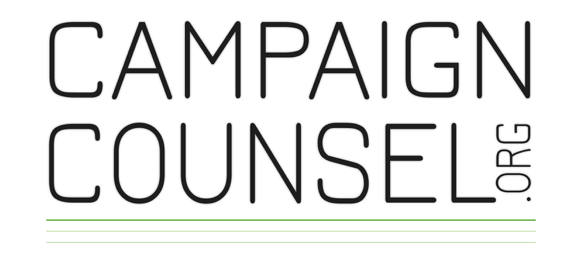How to Organize a Capital Campaign
After a nonprofit completes its pre-campaign audit and planning process, also called a feasibility study, and the organization decides to begin its capital campaign, the next step is to begin preparing campaign materials. These are the education, cultivation and solicitation tools necessary to successfully implement the campaign. Following material preparation comes the time to identify leadership. These are key pieces to organizing a capital campaign.
Draft a Compelling Capital Campaign Case for Support
The case for support is the benefits-oriented explanation of the fundraising campaign. From this document, the campaign brochure, video, newsletters and ancillary materials are created.
A capital campaign case for support outlines the needs and benefits of a nonprofit’s capital request. The very best cases for support weave together the image of the nonprofit, its role in the community, and how fulfilling that role benefits its users and the community. A case for support is generated by internal staff, board members, community leaders and donors. It is important to include internal and external leaders’ perspectives. If you only have the internal perspective, staff and board, you may miss the case’s key selling points from the potential donor’s perspective.
The case for support outlines the campaign vision, explains all the details of the campaign and reasons why the organization is undertaking a major expansion/improvement project. Most importantly, it highlights all the benefits that a successful campaign will provide.
Even though there are numerous elements within the case for support, keep it concise and easy to read. Its most important elements are the benefits your campaign will bring to your clientele and community.
Create a Capital Campaign Prospectus
Upon completion of the case for support, write a simple prospectus that can be used until a formal campaign brochure is produced. A prospectus consists of a cover sheet, a cover letter, the case for support, and a simple campaign gift intention form.
The prospectus can be punctuated with graphics and/or pictures and, if done correctly, acts as a thorough review of the reasons for the campaign. The cover should be personalized with the prospect’s name and the cover letter must contain a specific request for funding.
The gift intention form can be very simple and serves as an interim gift card until the official pledge cards are printed as part of the campaign brochure.
Build your Capital Campaign Solicitation Toolbox
Campaign Brochure: The capital campaign brochure should follow the case for support as a guide. Much of the case statement’s text can be used in the brochure, but keep in mind that a brochure should be a graphically appealing document. Don’t clutter the brochure with too much text, and make sure the text you use is valuable and helpful in bringing the reader to the conclusion that the campaign is worth supporting.
Also, create the brochure so that it is a tool for the volunteers and other solicitors. Start with the first page and outline the challenges and summary of why the organization is doing what it is doing. Use the middle pages to explain in detail the benefits of the campaign. Use the final page as a summary and sales vehicle to encourage the donor to give.
The inside cover might have a folder that will allow for a special letter to be inserted. This letter would be the formal request for funding. The back folder can hold additional campaign materials, like the pledge card.
Create a high-quality brochure! Donors evaluate the campaign by the quality of the materials. It doesn’t’ need to be flashy or too expensive, but it should convey the complete story in a graphically appealing manner. Involving a competent graphic designer can greatly enhance the quality of the brochure.
Campaign Video: A well-produced video is the best vehicle to explain the case for support and boost the likelihood of receiving a gift. It will, however, is require considerable time, effort and skill.
Just as you wouldn't copy your campaign brochure on the copy machine, neither should you attempt to shoot your own video with your own equipment. Hire an experienced video producer to produce a video that is about seven minutes long.
Creating a video script requires a clear and concise thought process. Many nonprofit videos play heavy on the emotional effects (hungry kids, sick people, the elderly, etc.), but don't convey a high degree of new information. Use emotion to grab the viewer’s attention, outline the challenge, explain how the organization will meet the challenge, what the benefits to a successful campaign will be, the financial information, and end with an emotional appeal.
The video should be taken and shown to every prospective donor. Mailing the video in lieu of a visit is not effective. Explain that by showing the video, the prospective donor can see and hear what the campaign is all about, and by seeing the video, the meeting will be shorter. See some capital campaign video examples here.
Make sure you have a laptop or a tablet you can bring on each visit. A well-done video will ensure that no matter what is actually said in the solicitation meeting, the full case and campaign details will be explained.
Identify Capital Campaign Leaders
Campaign leadership can come from a variety of sources including:
Past Board Members
Volunteers
Community Leaders
Corporate Leaders
Board Members
Elected Officials
Industry Leaders
A great source of campaign leaders is from previous successful campaigns in the community. Review past campaigns and seek the involvement of those leaders in your campaign.
Qualities of Capital Campaign Leadership
Capital campaign leaders should be committed to the success of the campaign and have knowledge of the mission of the organization and how that organization serves the community. Ideally, the campaign leader will also make a "leadership" gift.
A leadership gift is not necessarily, but often is, judged by the size of the gift. A leadership gift is one that provides leadership by its amount. That may mean a leader could make a $10,000 gift if a $10,000 gift would impress other potential leaders. If the leader you are recruiting is a multi-millionaire or independently wealthy (or is perceived in the community to be super-wealthy), then a $10,000 gift is not going to impress anyone.
The key here is to find someone that is truly committed – time and money – to the campaign. In addition to the gift, the leader should be willing to allow his or her name to be used in recruiting and soliciting others.
The most important contribution of great leaders is their willingness to open doors to other potential leaders and donors. Having the right person ask is almost always THE critical part of the campaign process. The campaign leader should be highly respected and someone that others will welcome into their homes or offices and listen to what the leader has to say. If a proposed leader can’t open the door to potential leaders and donors, then that person is not a leader, he or she is a donor.
Next Steps for Your Capital Campaign
Now that you know how to organize your capital campaign, find out if you need a fundraising consultant. Or, contact us for a no-fee workshop today.
Kevin Wallace is president of CampaignCounsel.org, specializing in capital campaign planning and management. Reach him by email or visit www.campaigncounsel.org.
Adapted with permission from an article originally published by William Kruger.







